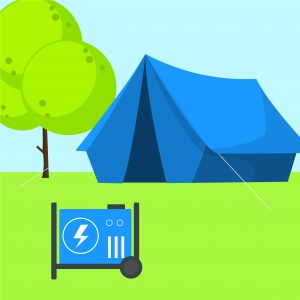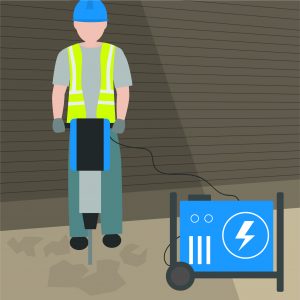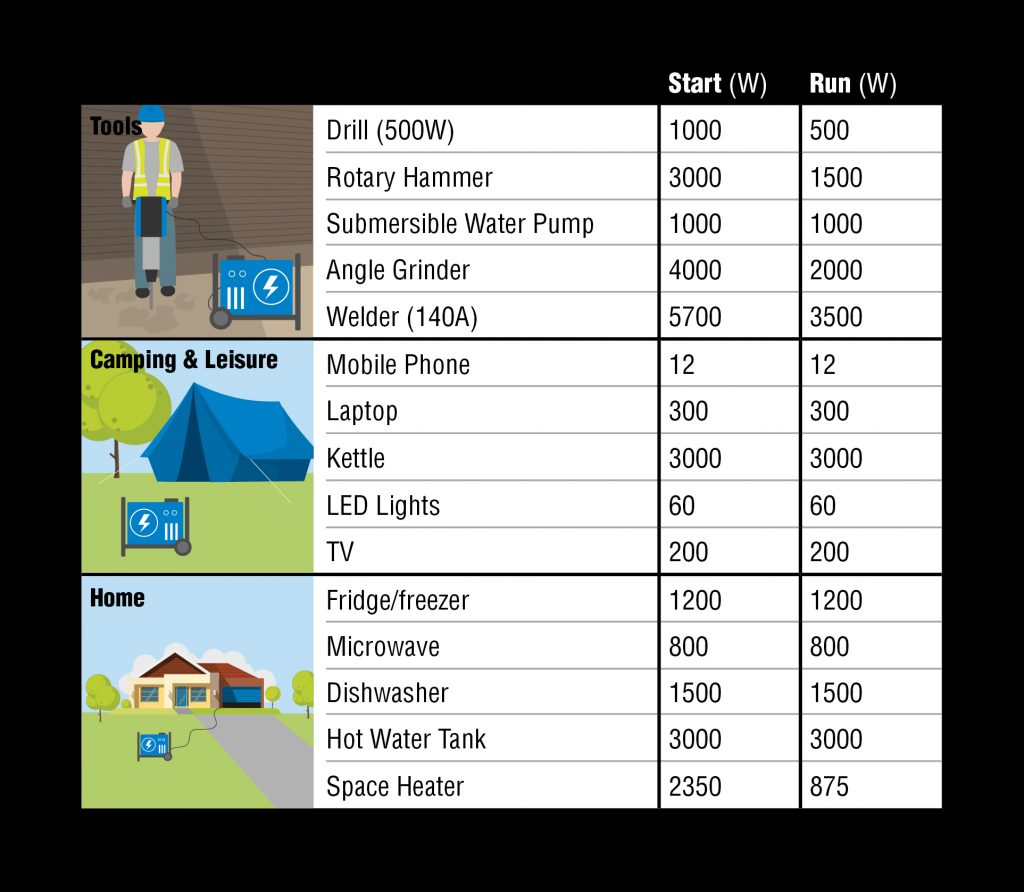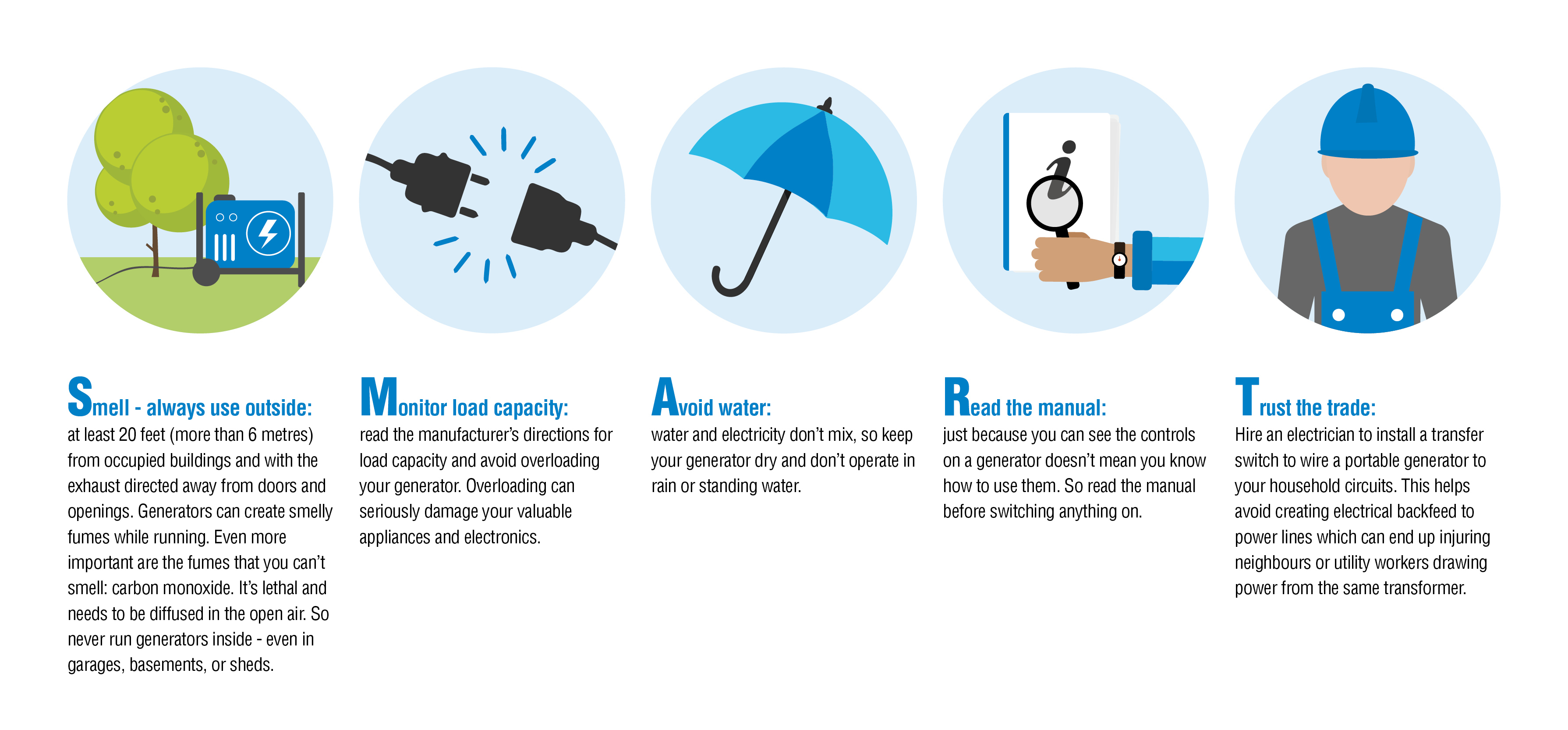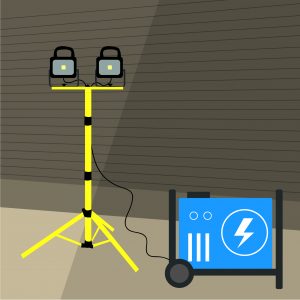Choosing the right generator for you
27th May 2021

A generator can be a handy bit of kit for both homeowners and professional tradespeople – there are options to power everything from laptops to power tools. They can even save you money and time. But how do you know which generator is right for your needs?
To support the launch of our brand new range of generators, we’ve prepared this simple guide to help you understand all the options.
What can you use a generator for?
At Draper Tools we offer a wide range of generators, here’s a look at just a few of the things you can do with a generator:
- Charge a PC or mobile phone if you’re working from home and have a power cut
- Power a fridge and charge mobile phones or laptops whilst camping
- Supply electricity to a garage, shed or allotment without mains power
- Keep fridges, freezers and heaters running during power cuts
- Charge power tool batteries or power your tools onsite
- Work remotely in gardens or fields and other locations where extension cables won’t reach
- Provide light and power to stables or barns
- Power water pumps during flooding or to empty ponds and pools
Please note generators must always be used outside in a well ventilated area
Choosing the right generator
Generators generally fall into two usage groups: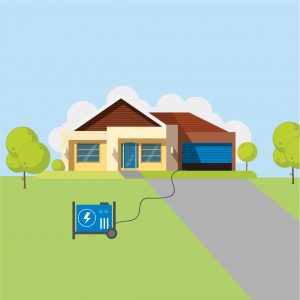
- Generators for leisure and home
- Generators for industrial and site
It’s important to consider your usage requirements prior to choosing a generator from either of these groups. Are you intending to power a few essentials on a camping trip for example, or are you looking to power an event or industrial site equipment?
You will also need to decide whether an open or closed frame generator is best for you. Open frame generators are designed so that the engines are exposed, whereas closed frame alternatives completely enclose the engines. This reduces noise and better safeguards the unit from outside forces such as wind and dirt.
What is an inverter generator?
Inverter generators differ to standard generators in that they are smaller, lighter and quieter than standard generators. Featuring Sine Wave technology, they are designed to emit a stable output, preventing them from being damaged by power surges. This is essential if you intend to power sensitive electronics such as laptops, computers, game consoles, TVs and similar appliances. Running these kinds of appliances on a standard generator, risks causing them damage.
Inverter generators for home and leisure use
If you’re looking for a generator that will be primarily used for camping and caravanning, small exhibitions and events, around the home, garage or office – these are some of the key features to look out for.
Key features:
- Silent or quiet running
- Light weight and compact
- Easy to transport
- Run time – how long will it last?
- Power output - 230volt and 12volt
- Inverter technology
Generators for industrial and site use
Generators that will be primarily used in the workplace or on site where the output is restricted to 110volt are very different to those for home use. Here are a few key factors to take into consideration when choosing a generator for industrial use.
Key features:
- Ease of transportation
- Low oil warning system
- Petrol powered
- Run time
- Durability
- Robustness
Calculate required power output
Once you’ve identified the type of generator that suits your usage, it’s important to calculate the power output you’ll need. This will depend on the appliances or tools you plan to use and how many you intend use at one time. The maximum power output of a generator is indicated in Kilowatts – 1Kw is equivalent to 1000 watts.
The following four steps will help you to select a suitable generator:
- Identify the tools and appliances that you will power from the generator
- Determine the required wattage for each item
- Total the wattage required to power your identified items simultaneously, (allowing extra for motor starting). If you have an appliance with a high wattage that won’t be used continuously, this can be considered in your calculation, for example: When in a caravan, you could turn the TV off when you need to use the microwave, instead of using a higher powered generator
- Choose a Generator that has continuous rated watts that meets or exceeds your required total
Power output checklist
- Be aware that induction motors, electric pumps, air conditioners and air compressors can require up to 6-8 times their running current for initial start-up.
- Once you have determined exactly which appliances your generator will power and you know which are likely to be powered at a single time, ensure that you consider whether you’ll be using extension leads. As the cord gets longer, the current carrying capacity of the cord gets lower. This has an impact on accurately calculating the required KW of a generator.
- The generators rated output must be greater than the total power consumption of all appliances connected to it and expected to be used at the same time. Higher starting currents mentioned above should be taken into consideration when using your generator. Please note that the appliance with the largest electric motor fitted should be switched on first, followed by the others once the main appliance is running.
Here is a handy guide to approximate power ratings of common electrical appliances to help you determine your power requirements:
Generator safety
As generators run on petrol or diesel and their engines emit fumes, they should always be kept outside during operation. When filling the generator with fuel, ensure that the area is clear of dust and other debris as well as any source of spark or flame, and in case of fuel spillage, clean up immediately.
When operating a generator, remember to think SMART:
Generator maintenance tips:
As with any engine, your generator will need regular, professional maintenance. We’ve highlighted some basic best practice guidance below, always refer to the manual for full details on your specific model.
- Oil: All Draper generators are shipped without oil in the engines. Before you use the generator for the first time, check the manual for recommended oil types and fill to required level. Check oil levels regularly.
- Fuel: It’s important to use new, clean fuel in your generator. If you’re not using your generator for any length of time, empty the tank.
- Exposure to the elements: Be aware of the environment that you’ll be working in. Generators shouldn’t be used outside in bad weather. Dusty environments may risk causing clogging of the air filter.
- Overloading: It’s important to remember that a generator has a maximum power output. Always take this into consideration to ensure you don’t overload the generator.
- Run time: Like any engine, the one in a generator produces heat and has an indicated duty cycle (amount of time it can run before it needs to be allowed to cool down). Refer to the manual for more details on your model and ensure you do not exceed this.
Help and support from Draper Tools
Draper Tools has introduced an extensive range of generators with models to suit a wide variety of uses. If you have any questions about our generators or need any advice, the Draper Product Support team are always happy to help. You can call our product helpline on +44 (0) 23 8049 4344
